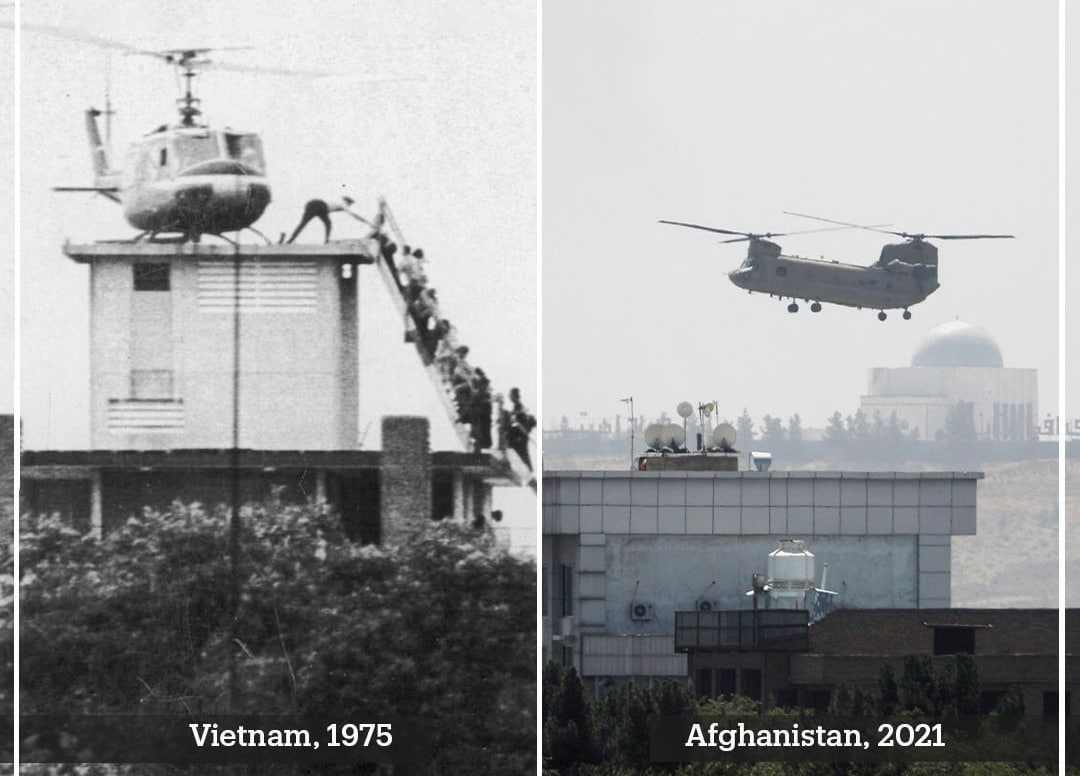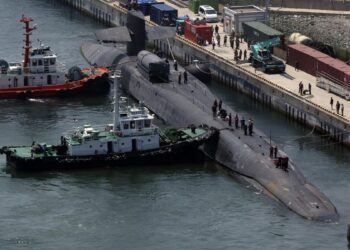By now, each one of us has become aware of what is unfolding in Afghanistan. The issue has been the major headline across the globe for the past few days.
Although some of us might not have been old enough to remember what happened post 9/11, the tale has been widely covered in several books, movies, and documentaries.
A story of how the United States decided to “invade” Afghanistan when the World Trade Centre went down in New York.
At that time, it was believed that the terrorist organization Al-Qaeda, which was blamed for the 9/11 attack, was based out of Afghanistan and was provided safe haven by the then Taliban regime.
 This situation was unacceptable by the U.S., and hence it decided to put boots on the ground. Now there has been quite extensive research and debate about what really the true intentions of the United States were at that time when it decided to move into Afghanistan, but for argument’s sake let us assume that the intentions were just to eliminate Al-Qaeda and constrain the related terror organizations like the Taliban.
This situation was unacceptable by the U.S., and hence it decided to put boots on the ground. Now there has been quite extensive research and debate about what really the true intentions of the United States were at that time when it decided to move into Afghanistan, but for argument’s sake let us assume that the intentions were just to eliminate Al-Qaeda and constrain the related terror organizations like the Taliban.
But if that had been the case, the U.S. would have withdrawn from Afghanistan when the Taliban was in retreat in the late 2000s, or when they finally eliminated Osama Bin Laden. Instead, they chose to stay.
The recent statements by President Biden indicate that the United States never went there to ‘build a nation’, its sole motive was to control terrorism.
Then why over the past two decades did the U.S. invest heavily in Afghanistan? These investments were not just monetary, but political as well.
Afghanistan’s most recent regime has had deep ties to the United States, and most of its policies were greatly influenced by Washington.
This was not the first time when the U.S. decided to impose its conceptualization of a modern democracy on other countries, and probably will not be the last either.
When the U.S. entered Afghanistan, it gave hope to its citizens that it would liberate them from the clutches of the extremist organization.

They would show them what freedom feels like, what it feels to live in a liberal world or one can say a western world.
And a fair share of its investments in the country was meant for a societal shift as well. But after fighting the Taliban rigorously for over two decades, has the United States been able to do what it promised?
Or is Afghanistan back to square one? Well, the situation does seem like that. President Biden also said in his statement that there could have been no ‘ideal’ time to leave Afghanistan and no way to ensure that chaos did not unfold afterwards.
But many foreign policy researchers and defence analysts have raised serious concerns regarding the manner of withdrawal followed by the U.S., as it completely neglected the humanitarian crisis that might occur afterwards.
Experts have also pointed out the grave intelligence failure of the United States as it had no hint of how fast the Taliban would take over the country when the American and NATO troops leave.
With wide consensus, this withdrawal has turned out to be a matter of great humiliation for the United States and its foreign policy.
With disturbing visuals coming out of Kabul Airport, one video which stands out is of the Afghan people running on the runway of the airport and trying to cling to the landing gear of the C-17 Globemaster of the U.S. Air Force as it takes off from Kabul.
There is a painful metaphor hidden in that video. It symbolizes betrayal. A betrayal of the trust that the helpless Afghan people had in the promises made by the United States.
A betrayal of the hope that the U.S. gave to those people. And a betrayal by the world leaders, who ultimately just cared about their own citizens and were willing to leave the Afghan people to die when the challenging times came.
This betrayal by the United States does not necessarily apply only to Afghanistan, but it has wider implications for the world as a whole. This has established a pattern for the world to see.
/cdn.vox-cdn.com/uploads/chorus_image/image/64407433/784028.0.jpg)
A pattern highlighting the United States’ involvement in war-struck regions, how it initially enters the playfield with promises of a better future and then exits the status quo when it stops suiting its motives, no matter what tragedy it inflicts on the residents of those regions.
This happened in Vietnam and is now happening in Afghanistan as well. Whenever something goes south, or the Americans mess up, the first embassy which is evacuated is that of the United States.
Hence, comparisons are being drawn between what happened in Saigon in 1975, and what is happening now in Kabul, with choppers evacuating the U.S. personnel from the embassy building in a similar manner.
This pattern has led to an emergence of a trust deficit regarding the promises that the U.S. makes to the world. Now every country might think twice before relying on United States’ word. Because they never know what the true outcome of that promise might be.
















